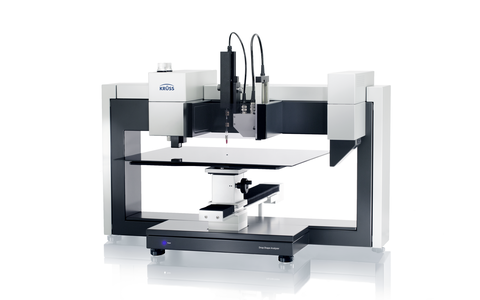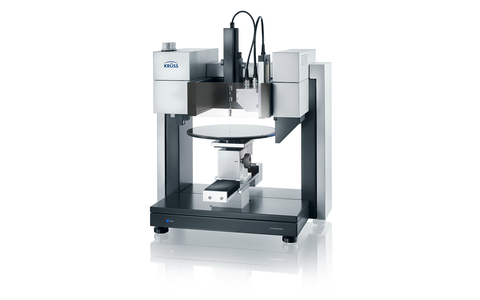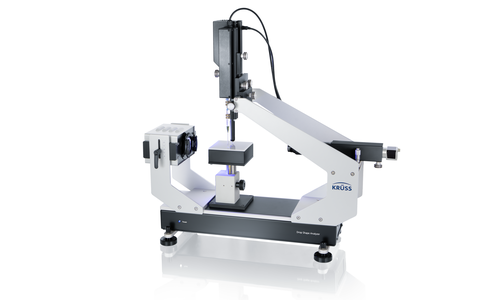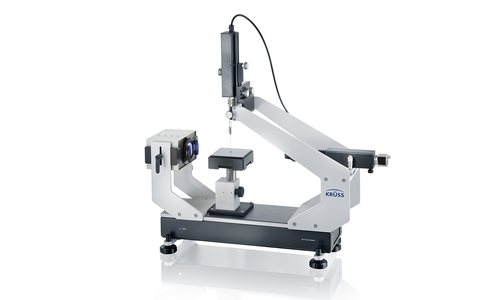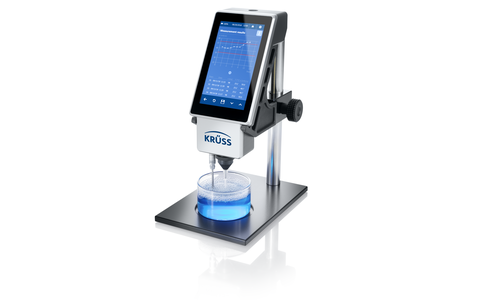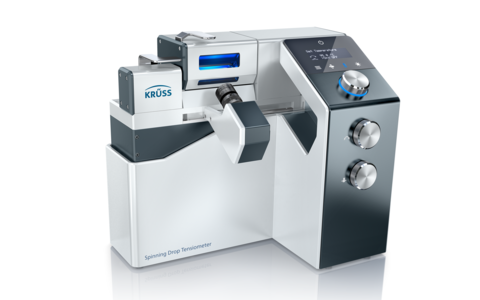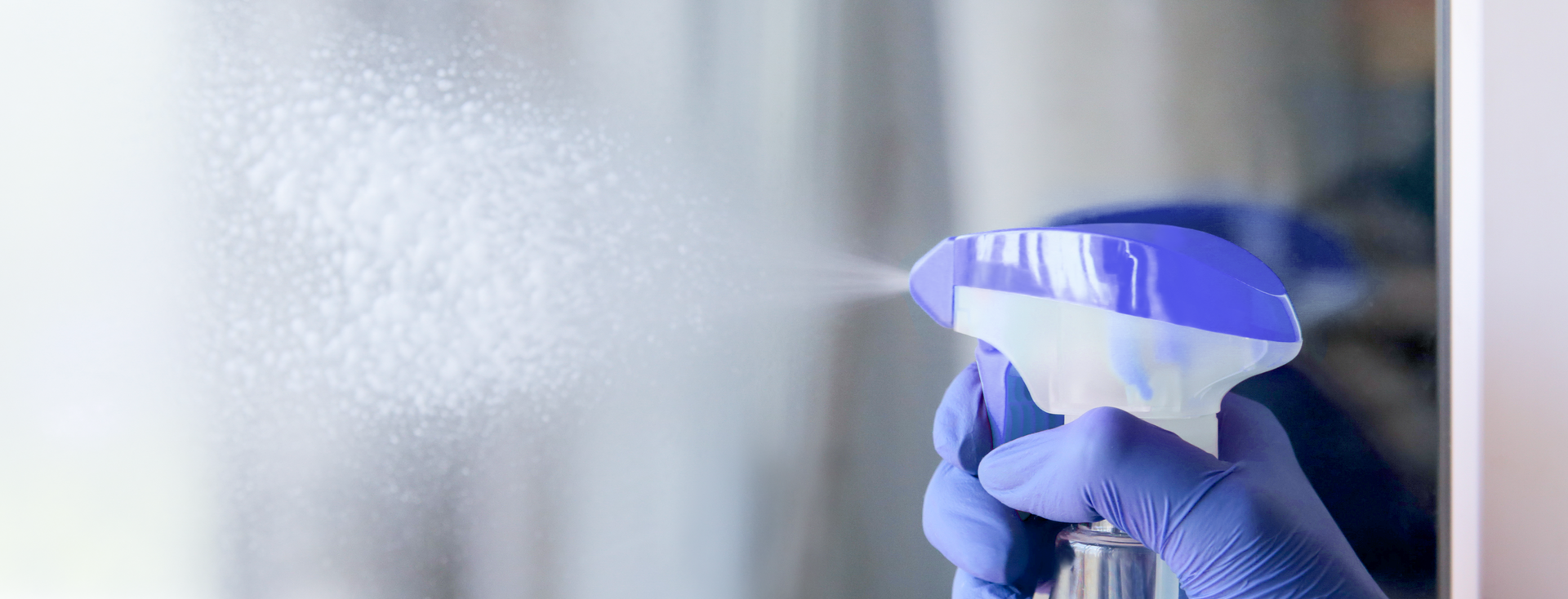
Application of surfactants
Interfacial chemistry measuring methods for the research and development of surfactants and their technical use
Emulsifiers, wetting agents, foaming agents, collecting agents - there are a vast number of names for surfactants depending on the areas in which they are used. Surfactants reduce the surface tension or interfacial tension with respect to an adjacent phase and therefore lie at the heart of interfacial chemistry.
With decades of experience in tensiometry, contact angle measurement and foam analysis, we make an important contribution to surfactant research and development. Our measuring methods reflect process conditions such as temperature, pressure and speed or the type of wetting process. Our products enable the use of surfactants to be optimised for the particular application.
Optimising the wetting of solid surfaces
- Wetting of textiles and other surfaces for washing and cleaning
- Adhesive wetting
- Wetting for painting, printing and coating
- Galvanic baths
With technical procedures, the quality of the process or of the end product frequently depends on the wetting of the solid material by an aqueous solution. However, the high surface tension of water often leads to wetting problems. The surface tension can be reduced and better wetting achieved by adding surfactants.
Our tensiometers measure the surface tension precisely and, depending on the requirement, with a high degree of automation. The contact angle, which can be determined by our stationary or mobile drop shape analysis instruments, provides information on the wetting of the solid.
In the case of fast technical processes, such as printing or bonding, the required reduction in surface tension must often take place in fractions of a second. We have designed our bubble pressure tensiometers for measuring dynamic surface tension at surface ages of a few milliseconds.
Connection between water and hydrophobic phases
- Detergents and cleaning agents
- Emulsions in foodstuffs and body-care products
- Mobilisation of organic phases in crude oil production or in medicine
- Emulsion polymerisation
The washing effect of surfactants is based, on the one hand, on the better wetting of the surface to be cleaned. On the other, surfactants mobilise hydrophobic substances by incorporating them in molecule clusters (micelles). Our fully automatic tensiometers measure the critical micelle concentration CMC, above which these micelles occur. The CMC is an important characteristic for the efficiency of surfactants and frequently determines the necessary dosage.
Emulsions, such as milk or creams, are mixtures which are stable in the medium term of two liquids which are not soluble in one another. They are produced and stabilised with the help of natural or synthetic surfactants as emulsifiers. The droplet size achieved when mixing and the tendency to segregate depend on the interfacial tension.
We have developed a range of tensiometer types for measuring the interfacial tension for different application areas. As well as static measurements with force sensor tensiometers, our drop volume tensiometers also characterise the behaviour of dynamic interface processes. Measurement using spinning drop technology is used for extremely low interfacial tensions, which occur, for example, in enhanced oil recovery (EOR).
Improvement of dispersibility of powders and pigments
- Paints and varnishes
- Creams and other cosmetics containing pigments
- Concrete
- Latex
In solid-liquid dispersions, interface processes between powder and liquid determine the degree of distribution. Here, surfactants help to improve the mixability and stability.
Our tensiometers measure the surface tension of the liquid which is definitive for the powder wetting. In addition, measurement of the powder contact angle characterises the solid constituents of the mixture. Both analyses lead to an overall picture of the interface behaviour and help with the separate optimisation of the constituents.
Improvement of sprayability
- Sprays for hair and body care
- Spraying of pesticides
- Cleaning sprays
The dispersion of a volume of liquid into many small droplets goes hand-in-hand with an increase in the total surface area. This is easier to achieve the smaller the surface tension. Sprays therefore frequently contain surfactants in order to obtain a fine spray mist.
Spraying is a highly dynamic process in which the surfactants must produce their effect in a very short time. Dynamic surface tension measurements with our bubble pressure tensiometers contribute to the development and optimisation of sprays.
Foam formation and foam prevention
- Deliberate foam formation: body care, culinary foams, flotation, fire fighting
- Foam prevention: Printing and coating, cooling lubricants, liquid conveying, industrial cleaning
For deliberately produced foams, our foam analysis instruments provide extensive options for investigating the foamability and foam stability, the moisture content, and the bubble size distribution.
In many applications, foams are an undesirable side-effect of adding surfactants. For this reason, foam-inhibiting or foam-reducing agents are often used as well as low-foaming surfactants (low-foamers). Our methods for detecting the foam height measure the tendency to foam and the foam stability, even with foams which have short-term stability.















